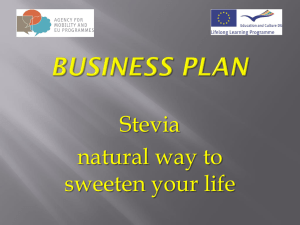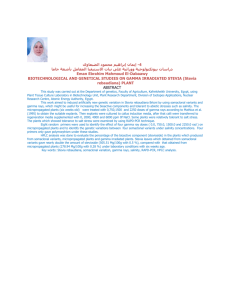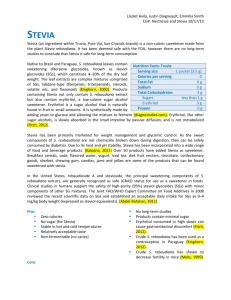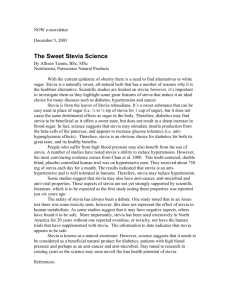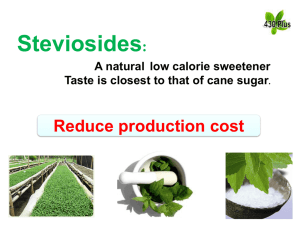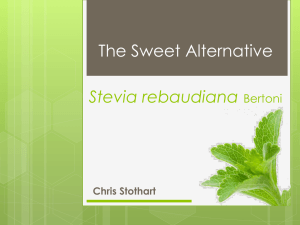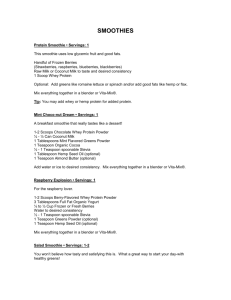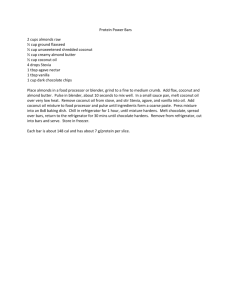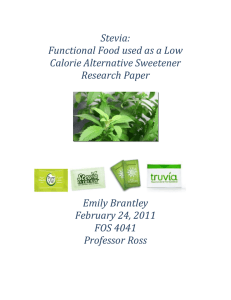Stevia - Help Your Health
advertisement
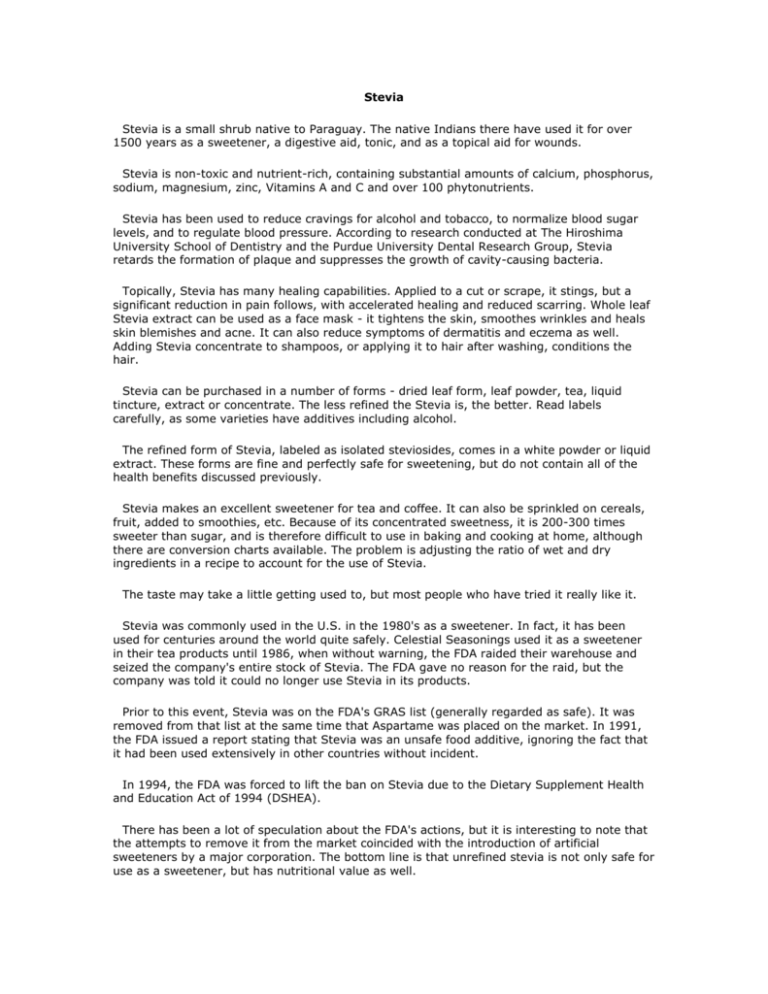
Stevia Stevia is a small shrub native to Paraguay. The native Indians there have used it for over 1500 years as a sweetener, a digestive aid, tonic, and as a topical aid for wounds. Stevia is non-toxic and nutrient-rich, containing substantial amounts of calcium, phosphorus, sodium, magnesium, zinc, Vitamins A and C and over 100 phytonutrients. Stevia has been used to reduce cravings for alcohol and tobacco, to normalize blood sugar levels, and to regulate blood pressure. According to research conducted at The Hiroshima University School of Dentistry and the Purdue University Dental Research Group, Stevia retards the formation of plaque and suppresses the growth of cavity-causing bacteria. Topically, Stevia has many healing capabilities. Applied to a cut or scrape, it stings, but a significant reduction in pain follows, with accelerated healing and reduced scarring. Whole leaf Stevia extract can be used as a face mask - it tightens the skin, smoothes wrinkles and heals skin blemishes and acne. It can also reduce symptoms of dermatitis and eczema as well. Adding Stevia concentrate to shampoos, or applying it to hair after washing, conditions the hair. Stevia can be purchased in a number of forms - dried leaf form, leaf powder, tea, liquid tincture, extract or concentrate. The less refined the Stevia is, the better. Read labels carefully, as some varieties have additives including alcohol. The refined form of Stevia, labeled as isolated steviosides, comes in a white powder or liquid extract. These forms are fine and perfectly safe for sweetening, but do not contain all of the health benefits discussed previously. Stevia makes an excellent sweetener for tea and coffee. It can also be sprinkled on cereals, fruit, added to smoothies, etc. Because of its concentrated sweetness, it is 200-300 times sweeter than sugar, and is therefore difficult to use in baking and cooking at home, although there are conversion charts available. The problem is adjusting the ratio of wet and dry ingredients in a recipe to account for the use of Stevia. The taste may take a little getting used to, but most people who have tried it really like it. Stevia was commonly used in the U.S. in the 1980's as a sweetener. In fact, it has been used for centuries around the world quite safely. Celestial Seasonings used it as a sweetener in their tea products until 1986, when without warning, the FDA raided their warehouse and seized the company's entire stock of Stevia. The FDA gave no reason for the raid, but the company was told it could no longer use Stevia in its products. Prior to this event, Stevia was on the FDA's GRAS list (generally regarded as safe). It was removed from that list at the same time that Aspartame was placed on the market. In 1991, the FDA issued a report stating that Stevia was an unsafe food additive, ignoring the fact that it had been used extensively in other countries without incident. In 1994, the FDA was forced to lift the ban on Stevia due to the Dietary Supplement Health and Education Act of 1994 (DSHEA). There has been a lot of speculation about the FDA's actions, but it is interesting to note that the attempts to remove it from the market coincided with the introduction of artificial sweeteners by a major corporation. The bottom line is that unrefined stevia is not only safe for use as a sweetener, but has nutritional value as well.
